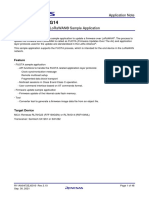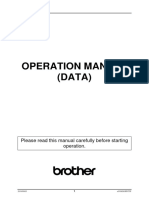0% found this document useful (0 votes)
5 views18 pages06 DT Python 3
The document provides an overview of Python functions, including their definition, calling, and use of parameters. It also introduces the Pandas library for data manipulation and Matplotlib for data visualization. Additionally, it includes a homework assignment related to analyzing stock data using a DataFrame.
Uploaded by
Filippo TenaniCopyright
© © All Rights Reserved
We take content rights seriously. If you suspect this is your content, claim it here.
Available Formats
Download as PDF, TXT or read online on Scribd
0% found this document useful (0 votes)
5 views18 pages06 DT Python 3
The document provides an overview of Python functions, including their definition, calling, and use of parameters. It also introduces the Pandas library for data manipulation and Matplotlib for data visualization. Additionally, it includes a homework assignment related to analyzing stock data using a DataFrame.
Uploaded by
Filippo TenaniCopyright
© © All Rights Reserved
We take content rights seriously. If you suspect this is your content, claim it here.
Available Formats
Download as PDF, TXT or read online on Scribd
/ 18
























































































